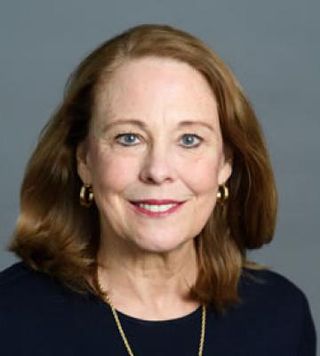Public Broadcasters' Jump Into NextGen TV Tiptoes Into Alliances with Commercial Ventures
Eyes on WNET multi-station venture in No. 1 market
When public broadcaster WNET Group announced its plan early in February to “transition” to NextGen TV in the New York City area, it marked public TV’s biggest splash into the ATSC 3.0 world -- a sector that has been until now dominated by high-volume promises from commercial broadcasters.

“This is a priority project for [our] organization,” said Bob Feinberg, WNET Group’s VP, business development and chief legal officer. He said that there is no timetable yet, but vowed that the group will use “the necessary resources to work as quickly as possible.”
“As far as I know we’re the first out the gate to commit to ATSC 3.0 in the New York City DMA [Designated Market Area] -- the single largest television market in the country,” Feinberg told Next TV. “So, this is a big step, not only for public television, but for the television industry in general.”
The WNET plan includes three stations. The WNET Group's Long Island-based WLIW21 will serve as the host station for ATSC 3.0 broadcasts for the three major PBS member stations in the New York metropolitan area: THIRTEEN, WLIW21 and the state-wide NJ PBS, which collectively reach about 7.45 million households
WLIW21 will carry high-definition programming from both WLIW21 and THIRTEEN, along with several standard-definition commercial sub-channels and the THIRTEEN PBS Kids service.
Feinberg described WNET’s NextGen TV agenda will include delivery of 4K Ultra High Definition and High Dynamic Range signals, interactivity, advanced emergency messaging, more closed captioning and audio languages.
The New York public TV NextGen TV venture comes amid a flurry of actions in other markets, although so far other large market public stations have been slow to unveil their plans. Public broadcasting stations have historically moved quickly into advanced TV ventures, including high definition and datacasting during the past three decades. Commercial stations are launching ATSC 3.0 delivery in about 50 cities.
Also: Nexstar: Broadcasters Could Make as Much as $15 Billion a Year From ATSC 3.0 by 2030
Awaiting Possible Commercial Collaboration
WNET is “working with a number of other public television entities … on the NextGen transition,” Feinberg said. He pointed out that The WNET Group has collaborated with the groups for many years and is a founding member of Public Media Venture Group, the AWARN Alliance, and Centralcast.
As for cooperation with New York City area commercial TV stations that are also developing NextGen TV projects, Feinberg said, “We have had some conversations with commercial stations and industry organizations,” but so far, no specific collaboration has emerged. He said that The WNET Group is “open to keeping those conversations going” but offered no details.
Media veteran Skip Pizzi has been retained as media consultant and project manager for WNET’s NextGen TV transition.
“We hope it will serve as a model for public TV – and for U.S. TV stations in general —on how the ATSC 3.0 standard’s many attributes can benefit the industry and its audiences,” Pizzi said.
Public TV Stations Elsewhere Working with Commercial Channels on 3.0
Among public television’s tools for rolling out NextGen TV in more markets are alliances with commercial TV stations -- so far implemented in about a dozen markets.

Lonna Thompson, who serves multiple executive roles at America’s Public Television Stations (APTS), said that public TV stations in 11 markets are currently involved with commercial NextGen TV projects in these communities: Baltimore; Houston; Kansas City; Orlando; Phoenix; Portland, Oregon; Raleigh-Durham; and Washington, D.C. In addition, public TV stations are taking part in duopoly transitions involving New Mexico PBS and Greenville, North Carolina, PTV plus an experimental authorization with the Michigan State University television facility.
Thompson, who is APTS’s executive VP, chief operating officer and general counsel, explains that her group has served a matchmaker role in connecting public TV stations with commercial NextGen TV projects.
“Sometimes a station calls us to say, ‘We’re ready to look at NextGen…,’” and in other cases BitPath and Pearl “have called us” to say they are entering a new market and want APTS’s help “to involve a public TV station there,” Thompson says.
Thompson acknowledges that, “These market transitions [such as 3.0] aren’t easy because you have to give everyone a part of the [action].” In the case of public TV stations, “they use their spectrum fully,” she adds, citing that many stations transmit two high definition signals plus diginets.
In D.C., Thompson points to the role of WHUT-TV, a public station licensed to the historically black Howard University. The transition to NextGen TV involved the station’s tech overhaul, which has included new equipment for 3.0 transmission. The upgrade has given the National Association of Broadcasters and other lobbying groups a visible testbed to show off NextGen TV to policymakers.
Thompson calls the WHUT venture a “great example of commercial stations’ commitment to Next Generation TV with the inclusion of public TV.” She points out that the NAB stepped into the project on several levels. Beyond the public affairs value of having a local broadcaster air NextGen TV to show off to legislators and regulators, NAB upped its ante by funding a “learning lab” that brought Howard University students into the transition.
Thompson says that public TV stations have plunged into NextGen TV for two major reasons. First, it is “mission related” because its datacasting and multiple channel features support the education and public safety objectives of stations. In addition, NextGen TV offers “revenue producing opportunities.” She points out that recent FCC rule changes, especially the March 2021 “broadcast internet rules” opened the doors for public stations to deliver services that generate new sources of income from their broadcast spectrum.
“It’s healthy for our stations to look at revenue from NextGen TV,” Thompson says. “It complements federal and state funding plus the contributions that stations receive from local corporate and individual donors.”
Focus on Mission-Driven Applications
Among those pushing the public TV move into NextGen TV is the Public Media Venture Group, a six-year-old consortium of 32 public TV organizations that collectively operate 115 stations. PMVG’s focus is on “mission-driven” services such as education and health, but the group is also exploring enterprise and data ventures as new turf for public stations.
“We’re helping them transition to the 3.0 platform, including advice on potential use cases,” PMVG CEO Marc Hand, a veteran public media executive, told Next TV. In particular, the group seeks “to make sure public stations have the resources they need” for NextGen TV services, including access to outside sources of capital, he added. Members of PMVG range from major producing channels such as WETA-TV (D.C.), Virginia Public Broadcasting and state-wide licensees in Kentucky and Alabama to small public channels, such as WCTE-TV in Cookesville, Tennessee.
“It’s in everybody’s interest; there are more incentives for public stations who recognized the mission-driven use cases,” Hand added. He cited the incentives of NextGen TV for public stations, starting with the increased capacity, which “allow five times more content” to be transmitted. He points to the extensive streams of over-the-air content -- education, local services, public safety and more -- that are available to public media.
On the datacasting side, Hand said that PMVG is "working on market transition with BitPath," the data project backed by Sinclair Broadcasting Group and Nexstar Media Group. He envisions opportunities for public media to "work with commercial stations on tech developments" and technology suppliers so that public stations can develop services "paralleling the path of commercial entities."
“We’d like to get up and running this year,” Hand said, citing the WNET plan plus activities by stations in Houston, Kansas City, Portland and others as an indicator of more aggressive public TV involvement in ATSC 3.0.
New Options Identified in N.C. PBS Evaluation
Further encouragement for the public broadcasters’ NextGen TV ventures came in a White Paper published early this month. Fred Engel, chief technology officer of PBS North Carolina, cited the value in “developing interactive elements [for] our local programming,” pointing to an upcoming field trial of custom-built ATSC 3.0-enabled receivers made by a local small-business electronics firm and funded by a U.S. Department of Homeland Security grant.
“This is a use case that can be easily replicated for many wide-area, secure, emergency notification applications, applications which could sit on a local, trusted public broadcaster’s ATSC 3.0 transmission signal,” Engel said.
He also acknowledged that, “smart TVs connected to the internet could bring a far richer viewing experience by bringing in and overlaying information related to the subject of the program.”
In the paper, Engel described many “public-facing applications that could be easily adapted to ATSC 3.0 that would require the design of simple devices to implement,” such as reading services for the visually impaired, weather or health and safety information features.
Engel pointed out that PBS North Carolina is the largest wireless network in the state, with 12 full-power UHF transmission facilities, translators and a Distributed Transmission System (DTS) that covers nearly the entire state.
“With that signal footprint and ATSC 3.0’s enhanced capabilities, the opportunities for applications that could empower a public broadcaster to better serve those in their viewing areas are endless,” Engel said. He cited North Carolina’s “visionary Public Safety Communications Officials” who came to PBS North Carolina seeking ways that 3.0 “could solve … the archaic way emergency notifications are sent to first responders.”
Engel, who sits on the ATSC Board of Directors, acknowledged that “experimentation will be needed for non-internet connected TVs to see what kind of engagements can be created through the station-specific broadcast application.” He emphasized that, “ATSC 3.0’s advanced video coding allows for a significant increase in data-carrying capacity to enable additional services.” ■
Broadcasting & Cable Newsletter
The smarter way to stay on top of broadcasting and cable industry. Sign up below
Contributor Gary Arlen is known for his insights into the convergence of media, telecom, content and technology. Gary was founder/editor/publisher of Interactivity Report, TeleServices Report and other influential newsletters; he was the longtime “curmudgeon” columnist for Multichannel News as well as a regular contributor to AdMap, Washington Technology and Telecommunications Reports. He writes regularly about trends and media/marketing for the Consumer Technology Association's i3 magazine plus several blogs. Gary has taught media-focused courses on the adjunct faculties at George Mason University and American University and has guest-lectured at MIT, Harvard, UCLA, University of Southern California and Northwestern University and at countless media, marketing and technology industry events. As President of Arlen Communications LLC, he has provided analyses about the development of applications and services for entertainment, marketing and e-commerce.



